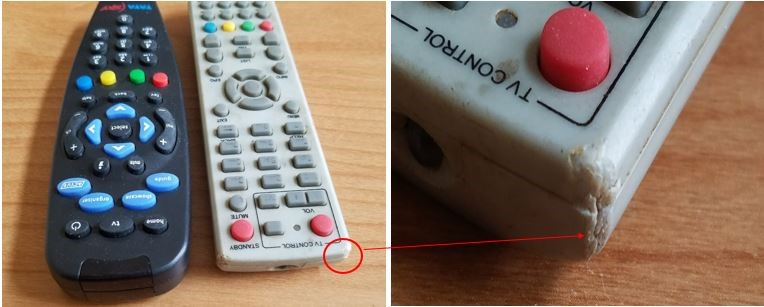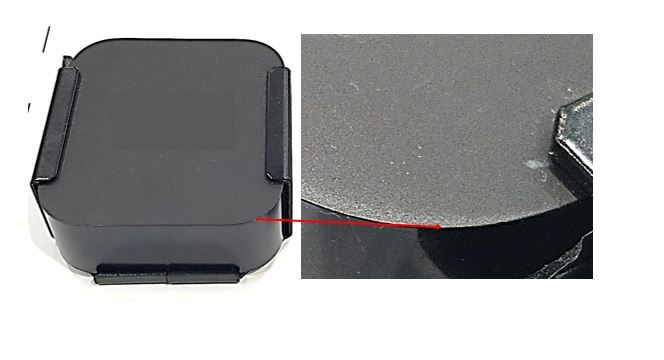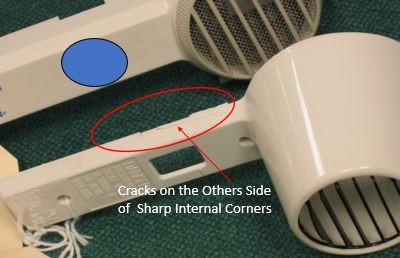Part 1 and 2 Summary
This is a continuation of the discussion from Part 1 and Part 2.
Let us start with a quick summary:
Unlike metals, plastics are not capable of withstanding long-term stresses. A significant number of failures occur due to long term stresses. These long-term stresses can result from:
- Willful disregard of this inherent characteristics of the materials
- Lack of knowledge of the characteristics
- As a result of poor choice of
- Materials
- Design (non-observance of design rules)
- Tooling errors
- Poor processing
In his book, Failure of Plastics and Rubber [1], David Wright conducted an analysis on 5,000 failed parts and came up with the causes for the failures shown in Figure 1.
![Figure 1 - Causes of plastics failure [1]](https://cdn.dfmpro.com/wp-content/uploads/2018/05/Figure-1-Causes-of-plastics-failure-1-1.png)
In my opinion, however, failures due to design deficiencies may be the cause of most of them and sometimes mistakenly attributed to the other three causes.
As an example, in part one we discussed the loss of chemical resistance due to inherent or applied stresses and failures due to sharp internal corners. Other examples of sharp internal corners showed reduction in both the chemical resistance and mechanical strength. These would ordinarily be labeled as material failures or the material being a significant contributor.
Figure 1 – Causes of plastics failure [1]
In part 2, failures were broadly classified into types of failures, namely:
- Catastrophic failures
- Major failures leading to injury, recalls and serious revenue loss
- Failures leading to loss of revenue, reputation and customer base
- Failures giving plastics a bad name
Plastic parts were also shown to perform four types of functions.
Some real-life examples were then discussed for failures that give plastics a bad name.
Let us now continue with the other types of failures:
Failures leading to loss of reputation, revenue and customer base
With the intense competition in a crowded market of today, there needs to be added emphasis on “delighting” the customer.
One of the tools used to determine how a supplier is satisfying its customer is called Kano analysis.
![Figure 2 - Kano Analysis [6]](https://cdn.dfmpro.com/wp-content/uploads/2018/05/Figure-2-Kano-Analysis-6.png)
Figure 2 – Kano Analysis [6]
Figure 2 shows that products or services just meeting the basic needs represented by the grey rectangle will not do very well in the market. On the other hand, customers will even pay a slight premium based on the reputation of the product.
Taking the example of plastic parts, the basic needs may be that the plastic parts just meet the essential functional requirements. The performance needs may be that it withstands very minor abuse such as an occasional drop to the carpet and requires only occasional cleaning.
Delighters are features such as being totally indestructible, extremely easy to clean, being scratchproof, having a soft touch, etc.
Now let us look at some examples and I would like you to answer if the following products meet even the basic needs.

Figure 3
Figure 3 shows a portable Karaoke equipment with two microphones with plastic clips on either side holding two microphones. View 1 shows the clips on the left and right. View 2 shows the unbroken clip on the left. View 3 shows the broken clip on the right. View 4 shows the microphone in the clip on the left. View 5 shows me holding the microphone in the broken clip on the right.
Even the display unit has the clip on the right side broken. A closer examination indicates the cause of the failure as:
- the ring being under constant strain (the more one pushes the microphone down in to the holder, the greater the strain!)
- a sharp corner indicated by the arrow

Figure 4
Figure 4 shows two remote controls. The one on the left has large radiused corners. The one the right has relatively sharp corners. Just a few short drops even on a vinyl floor has caused ugly cracks on the sharp corners.

Figure 5

Figure 6
Figure 5 and 6 show a home entertainment device and the remote control for it
Notice the sharp edges on both them. The enclosure for the main unit will also have sharp internal corners (see discussion on internal sharp corners in Part 1).
What happens to the cosmetics of the edges the first time either one of them gets dropped? What happens to the chemical resistance of the main unit? (See figure 7).

Figure 7
Figure 7 shows a common hair dryer. Notice the cracks on the edges? Bad choice of material? Then why is not the rest of the dryer falling apart?
The real reason is sharp internal corners and rapid change in the wall thickness under the crack leading to very high stress concentration and molded in stress (see discussion in Part 1)

Figure 8
Figure 8 shows two USB cords. The one on the left has a well-designed strain relief that does not allow a sharp bend in the wire. The one on the right basically causes a “sharp internal” corner resulting in very high stress concentration.

Figure 9
Figure 9. shows the broken wheel on a trash can. A closer examination on the right shows the reason for the failure. A very sharp internal corner.
Catastrophic Failures:
These can cause death and destruction.
Just as a reminder, let us talk briefly about the recent issue with the ignition switch on the General Motors cars and how very simple design errors led to huge losses. Here are some quick statistics:
The cost for getting the switch designed right in the first place would have been 57 cents [2]. The total cost of the recall was $4.1 billion as of February 4, 2015 [3].
Now, let us imagine that someone is driving on a 2-lane highway at 50-60 mph (80 -100 km/h). Suddenly it starts to pour. The driver pushes the lever to actuate the wipers. A piece of the lever falls into his hand. The wipers do not start. The photograph below shows what driver sees.

Suddenly Crash! (Click on Hyperlink)
And his car is reduced to:

See figure 12 for what happened.

Figure 12
A 13 mm thickness section was joined to the rest of the part by a 6 mm thickness section (Figure 12)
(2) and (3)). The result was an obvious crater of a sink mark (Figure 12). (This alone should have raised a red flag for the designer that there was trouble lurking ahead). So, the failure here was a combination of extreme thickness and a rapid and large transition in the wall thickness. The acceptable variation in the wall thickness in the nominal wall is 25 % for amorphous plastics and 15 % for semi crystalline ones. Even the acceptable variation should be gradual. (Refer to the detailed discussion in Part 1.) [4]
Figure 13 shows a glass kettle capable of holding boiling water. It also has a handle to hold the cattle while it is hot and to pour. The middle view shows a failed handle and the right view is a closeup of the actual failure. The main causes of the failure are:
- Continuous strain on the plastic parts in the tightening of the ring around the neck of the kettle, compounded by,
- a sharp corner

Figure 13
What happens if the handle breaks off while one is pouring boiling hot tea over the lap of one’s guest!
Remember the McDonald’s Hot Coffee Case? In 1992, 79-year-old Stella Liebeck sued McDonald’s and a jury awarded her nearly $3 million in punitive damages for the burns she suffered! [5]
To conclude, occasionally one may have to break one or more design rules in order to accommodate some other functional needs.
Part 4 will deal with very specific areas and performance characteristics these violations will affect.
References:
[1] Modified from D. Wright; Failure of Plastics and Rubber Products, Smithers Rapra (2001) p. 6
[2] Associated Press, April 1, 2014
[3] CNN Money
[4] Photographs and excerpts from V. Bhargava; Robust Plastic Product Design: A Holistic Approach, Hanser Publishers, Munich
[5] [Source] :Consumer Attorneys of California
[6] [Source] : Samsung’s devices are for those who want cheap plastic, says HTC’s Mackenzie
Never Miss an Update
Subscribe to the HCL DFMPro Blog weekly digest
and stay informed about the latest content from industry leaders.